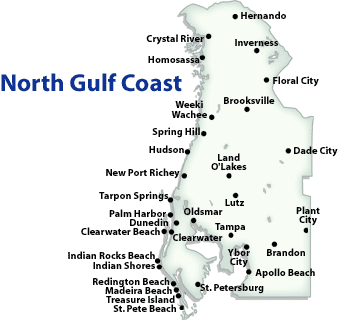 The Tampa Bay Area has that elusive quality that many attribute to the "real Florida."
The state's largest metro area is less fast-lane than Miami, but its strengths are just as varied. Florida's third-busiest airport, a vibrant business community, exceptional beaches,
and superior hotels and resorts make this an excellent place to spend a week or a lifetime.
Native Americans were the sole inhabitants
of the region for many years. (Tampa is a Native American word meaning "sticks of fire.") Spanish
explorers Juan Ponce de Leon, Panfilo de Narvaez, and Hernando de Soto passed through in the mid-1500s, and the U.S. Army
and civilian settlers arrived in 1824. The Spanish-American War was very good to Tampa, enabling industrialist Henry Plant to create an economic momentum that was sustained through the entire 20th century. A
military presence remains in Tampa at MacDill Air Force Base, the U.S. Operations Command.
Today the region offers astounding diversity.
Terrain ranges from the pine-dotted northern reaches to the coast's white-sand beaches and barrier islands. Tampa is a full-fledged city, with a high-rise skyline and highways jammed with traffic. Across the bay lies the peninsula
that contains Clearwater and St. Petersburg. The compact St. Petersburg downtown, which has interesting restaurants,
shops, and museums, is on the southeast side of the peninsula, facing Tampa.
Inland is largely classic American suburbia.
The peninsula's western periphery is rimmed by barrier islands with beaches, quiet parks, and little, laid-back beach towns.
To the north are communities that celebrate their ethnic heritage -- such as Tarpon Springs, settled by Greek sponge-divers
-- and, farther north, mostly undeveloped land dotted with crystal-clear rivers, springs, and nature preserves. To the
south lie resort towns, including Sarasota, which fill up in winter with snowbirds escaping the cold.
|

